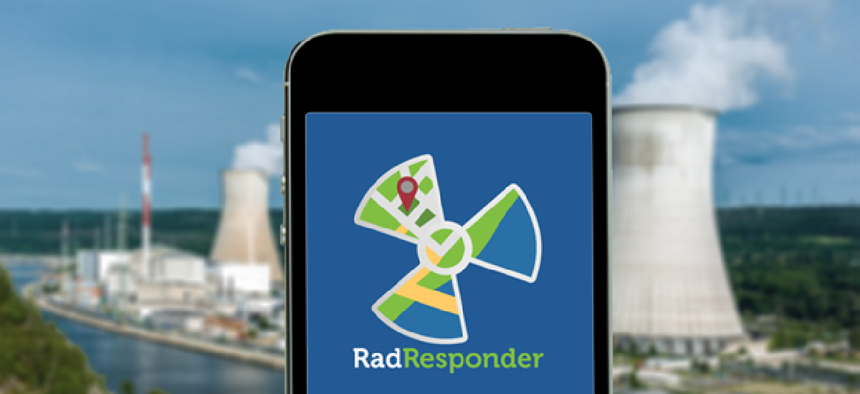Radiological data, real time

RadResponder is a cloud-based radiation data collection system that gives first responders standardized services for managing radiation data.
Poor communication and lack of a central data collection point during the Fukushima nuclear disaster in 2011 made it difficult for responders and government officials to understand the scope of the accident. That situation prompted the creation of RadResponder -- a system for collecting and sharing radiological data in real time with the agencies that need to know and respond.
We had a lot of different organizations in Japan -- international and domestic,” said Jeffrey Blizzard, program manager for RadResponder Network & Nuclear Incident Response Team. “The streamlined process of collecting, sharing and analyzing data was not happening efficiently.… That’s a major capability gap we’ve identified and worked to address with RadResponder.”
RadResponder -- a collaboration between the Federal Emergency Management Agency, the Department of Energy/National Nuclear Security Administration and the Environmental Protection Agency -- is a cloud-based radiation data collection system that gives first responders standardized services for managing, organizing, analyzing and mapping radiation data.
Using a mobile app, first responders enter in the key information about a nuclear event, including what it is, what time it started and where they are. Third-party radiological equipment can be connected to the app via Bluetooth or, if modern technology isn’t available, information can be radioed or called in to a central location where someone can enter data into a web application.
The system’s architecture allows emergency responders access via wireless devices to the RadResponder Network, which taps databases at NNSA and EPA facilities, as well as local sources, according to a report in FCW, GCN’s sister site. The integration provides responders with a better picture of radiation levels in a given incident. According to NNSA, the system can provide hourly averages, minute-by-minute or on-demand measurements of radiation levels.
The data is hosted in a Microsoft Azure Government Cloud environment that automatically scales to support a surge of users and data during a disaster. Additionally, a RadResponder application programming interface allows third-party equipment or data to integrate directly with the network.
But RadResponder data and services, while free of charge to all federal, state, local, tribal and territorial response organizations, isn’t accessible to everyone, Blizzard said. Only authorized agency employees can apply for access.
The reason for keeping the information secure, he said, is to manage how the nuclear data is presented to the public, which might not be familiar with radiological terms.
“With [Fukushima] Japan, it became clear that managing the message is really key,” Blizzard said. If raw information gets into the hands of people who don’t have a background in the science, they may misinterpret the data and communicate inaccurate information. “Then you end up correcting the message instead of sending the right one first,” he said.
Nor is all information is available to all RadResponder’s participating organizations. Each first responder agency works as part of a collaborative network, Blizzard explained, where it can choose which partners to share data with.
Blizzard’s team is also working on data quality and verification issues. In every organization, he said, there are roles for administrators and data assessors, and data can be rejected. “If data comes in that seems inaccurate or incorrect, it goes through a thorough quality assurance / quality control process, which includes the data collector, to ensure the information is accurate prior to approval,” he said.
This year, Blizzard’s team has started going out into the field to train first responders at the local government level how to use RadResponder, although the training is completely voluntary. “We like to target state and local officials such as health, police, HAZMAT and fire departments. They are the ones using the network.”
Although it was originally designed to assist responders, RadResponder is not only used for emergencies. The radiological response team at the the PeaceHealth Sacred Heart Medical Center at RiverBend in Springfield, Ore., uses it to conduct monthly radiation monitoring around the hospital to keep the community better informed and better protected. The regular monitoring also helps hospital staff get familiar with radiation detection equipment and emergency response procedures.
In Kansas, the Department of Health and Environment used RadResponder to conduct environmental monitoring and sampling in an effort to collect background radiation data from across the state. The data will be aggregated into a national database and combined with epidemiological information to help identify how the environment impacts public health.
And response teams from the NNSA and the EPA used RadResponder to record measurements around the San Francisco Bay Area prior to Super Bowl 50, which underscores the flexibility of the network that supports preparedness missions, response operations and routine monitoring events, the organization said.
Editor's note: This article was changed Aug. 2 to delete attribution of the RadResponder network to NNSA. It is a collaborative project among the partners mentioned above.





